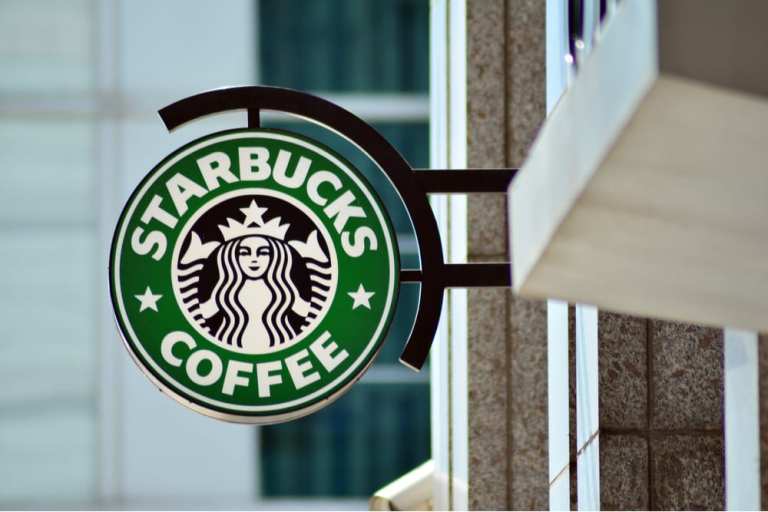
As Starbucks gained traction through its digital channels, and amplified its brand through additional markets with the Global Coffee Alliance and a new Starbucks Reserve Roastery location, the quick-service coffee chain reported a rise in its loyalty ranks during Q1 fiscal year 2020. The company also reported that global comparable store sales were up 5 percent, which was powered by a 2 percent increase in comparable transactions and a 3 percent increase in average ticket sales.
Starbucks President and CEO Kevin Johnson said on a conference call with analysts that the company added a record 1.4 million customers to its 90-day active Starbucks Rewards member base. It ended the quarter with 18.9 million active members in the U.S., which marked a 16 percent year-over-year rise. Johnson said the firm knows from experience that when customers join its rewards program, “their total spend with Starbucks increases meaningfully.”
Johnson noted that the company is increasingly valued for convenience, as the mix of mobile order and pay transactions in the U.S. grew to 17 percent in Q1. He added that the company’s “industry-leading digital platform will further differentiate us from the competition over time.” The firm’s brand equity research indicated that Starbucks “continues to lead consumer perceptions of specialty coffee retail concepts” in the U.S. ahead of other brands, he said, including those in the third-wave, independent and local coffee spaces.
That strength was partly aided by Starbucks’ proprietary beverage innovation, and its ability to customize handcrafted drinks at scale. Johnson said the company bolstered that competitive advantage in the first quarter by growing its cold brew platform and cold foam options with two new seasonal drinks: an Irish cream cold brew and a pumpkin cream cold brew. He noted that those two beverages combined contributed to the company’s traffic growth for the quarter. He also pointed out that the company’s Global Coffee Alliance with Nestle is now in more than 40 markets, including five new markets that it entered in the first quarter.
Johnson noted that every customer interaction in the Starbucks brick-and-mortar stores creates brand loyalty and customer affinity. The Global Coffee Alliance then acts as a brand amplifier to bring Starbucks’ coffee to new channels and markets.
The Starbucks Reserve Roastery locations are important brand amplifiers as well. Johnson said the company opened a roastery in Chicago in November — the sixth roastery around the world — to a “phenomenal customer reception.” Since its opening, Johnson noted, the roastery has continued to receive attention from around the world. It has brought in an average of 10,000 visitors a day, with a peak of more than 21,000 visitors a day.
The Coronavirus And Digital Sales In China
Johnson said that Q1 was an “exceptional quarter for Starbucks.” With the strength of its first-quarter earnings results, the company had intended to increase certain parts of its full-year financial outlook for fiscal year 2020. Due to the coronavirus outbreak, however, Starbucks will not revise its guidance at this time. As the company gains more clarity on the situation, Johnson said Starbucks will transparently communicate with investors.
The firm’s immediate focus in China is on two critical priorities: It aims to care for the health and well-being of its partners and customers, and play “a constructive role” in supporting local health officials and government leaders as they work to contain the coronavirus. However, Johnson said the company remains optimistic, and is committed to the long-term growth potential in China, which he said is “a market we have been in for more than 20 years.”
First-quarter sales from China’s mobile orders jumped to 15 percent of total revenue, up from 10 percent in the past quarter — with 9 percent coming from delivery, and 6 percent from mobile order and pickup. The earnings results were underpinned by the continued growth of China’s 90-day active Starbucks Rewards members to 10.2 million customers in Q1. He noted that this marked 40 percent growth over the prior year when the program was relaunched.
The company’s Q1 digital strength in China was further evidenced by record sales during Alibaba’s Singles’ Day event, its number-one card position on Tmall and its leading brand position on the social gifting platform of WeChat. During Starbucks’ 20 years in China, Johnson said the company created an unmatched brand stature by bringing a “unique, premium experience to our customers.”
Starbucks reported adjusted earnings per share of $.79, and revenues of $7.1 billion for Q1 fiscal year 2020, compared to analyst estimates of $.76 and $7.1 billion. The company also opened 539 net new stores in the first quarter, with 31,795 stores at the end of Q1.